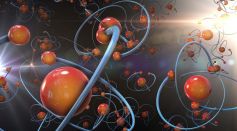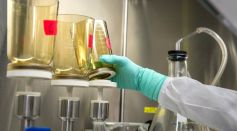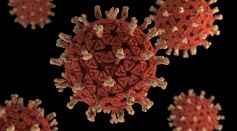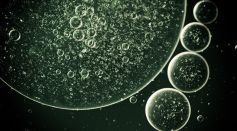Tags: Protein

Hair Loss Research Reveals the Mechanism Behind Cell Aging

QolorEX Detection Platform Uses Nanotechnology and Artificial Intelligence To Rapidly Diagnose Infectious Diseases

Starving Cancer Cells of Arginine Protein Could Make Them Vulnerable to Body's Immune Response, Study Suggests

Revolutionizing Protein Design with Artificial Intelligence: AI Generates New Enzymes for Genome Editing, Finger Proteins

Scientists From India Discovered Alternative Drug Molecules with Elevated Antitumor Potential on Cancer

Artificial Enzymes Programmed To Fight COVID-19 Virus Formed by Scientists Using Synthetic Biology

Combining Semiconductor Chip, Time Domain Sequencing Technology May Enhance Drug Discovery and Diagnostics [STUDY]

HIV Prevention: Researchers Suggest Identifying Antibodies and Human Genes as New Strategy for Making Effective Vaccine Against the Disease

Potential of Bacteria Demonstrated to Help Produce Protocells Emulating Real-Life Functionality

CHIP Ubiquitin Ligase Molecular Switch May Help in Proper Body and Cell Function Controlling Life Expectancy

Bioengineered Implant Made of Collagen Protein Taken from Skin Pig Successfully Restores Vision of People with Diseased Corneas

Chemical Reaction Using Cyanide, Ammonia and Carbon Dioxide Yields Amino Acids Maybe the Origin of Life

DeepMind Artificial Intelligence Database Predicts 3D Structures of Proteins Helping Scientists in the Field of Biology

GoogleAI Helps Theoretical Physicists Discover the Most Complex Protein Knot

One in Two Million Rare Blue Lobster Caught by Maine Fisherman Released Back to the Ocean

Geckos Have Nanometer-Thin Lipids in Their Feet Allowing Them to Stick to Walls, Study Reveals

AI Software Helps to Discover New Genome Family in Gut Microbiomes Through Protein in Seafood-Poisoning Bacteria

Protein That Plays Key Role in Inhibiting Flu Virus Replication Opens Possibilities for New Medicine for Influenza

Artificial Intelligence (AI) Predicts 3D Structure of Rotavirus Spike Protein Giving New Insights on How It Infects Cells

Protein Complex Launches Immune Response That Assemble in Droplets Within Liquid Environment in Cell to Regulate Immunity [Study]
Most Popular

New 'Supergiant' Sea Bug Found in South China Sea, Named After Darth Vader

Mediterranean Sea Was Refilled by a Catastrophic Flood Millions of Years Ago

Mysterious Cosmic Waves That Sound Like Birds Detected in Unexpected Space Region

NASA's James Webb Telescope Solves Mystery of 'Universe-Breaking' Red Dots





